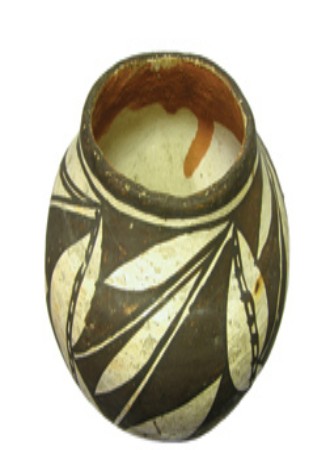
Bones of Contention: Native American Archaeology 1998
Distributed by Films for the Humanities and Sciences, Box 2053, Princeton, NJ 08543-2053; 800-257-5126
Produced by BBC Worldwide Americas, Inc.
Director n/a
VHS, color, 49 min.
Jr. High - Adult
Anthropology
Date Entered: 11/09/2018
Reviewed by Lori Foulke, Education and Social Science Library, University of Illinois, Urbana-ChampaignThe skeletal remains of humans from unmarked graves, unearthed during archaeological excavations and public construction of waterways and roads, have for decades been collected by museums, universities, and government agencies. The vast majority of these remains represent people of Native American descent.
In 1990, the Native American Graves Protection and Repatriation Act (NAGPRA) was passed, requiring universities, museums and agencies to inventory their collections of skeletal remains and repatriate them to their closest living relatives. The passage of this legislation resulted from more than two decades of lobbying by Native Americans.
Bones of Contention, as the title indicates, focuses on the divergent and bitter views held by two opposing camps affected by the legislation: physical anthropologists who believe the skeletal remains are valuable sources of scientific data that should not be lost, and Native Americans who believe all skeletal and material remains should be returned to them for proper reburial.
Rather than highlighting the positive aspects of NAGPRA, such as the progress being made toward legal recognition of Native American rights and world views, or the vast amount of data collected by anthropologists through the inventory process, the video instead focuses on the debate between the two groups.
Though the summary on the video's cover proclaims an even-handed treatment of the issue, the video is in fact biased. From its opening narration, with a reference to bone collecting and genocide, the video proceeds to represent the scientists and anthropologists as unsympathetic characters, racists, grave robbers, and murderers. A less malignant bias is evident in the absence of comments by anthropologists that agree with the Native American point of view on repatriation, creating the impression of a completely polarized debate where one does not exist; a balanced view of the array of responses to NAGPRA is sacrificed in the attempt to emphasize contention. Footage illustrating a constructive relationship and dialogue between Native Americans and anthropologists is included in the video, but its impact is lessened by its placement before the final segment, one which presents Native American views critical of anthropologists and US law. Had the editors placed the footage at the end of the video, the overall effect might have seemed more balanced, and the lasting impression more upbeat.
This video is appropriate for college level viewers, but its failure to address the historical and legal context of the collection of human skeletal remains in the US reduces its educational value for courses in ethnic studies, anthropology, legal studies, public policy, or political science. Its biases also severely limit its utility for classroom use. I would recommend this video for purchase only because it covers a topic that is not treated widely elsewhere.